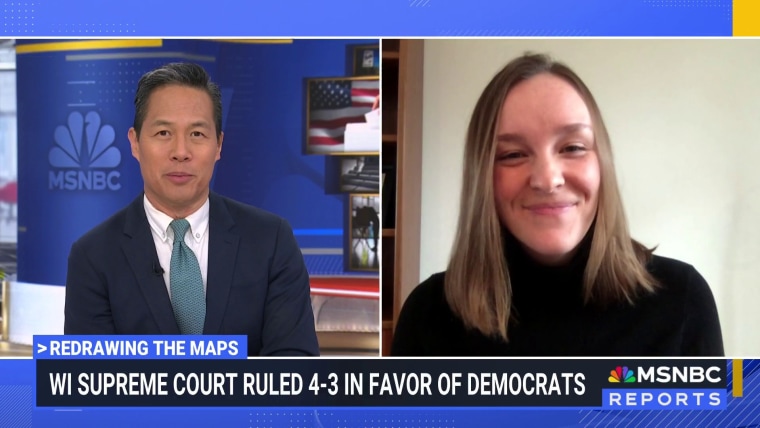There were plenty of important elections this year — gubernatorial contests, congressional races, mayoral elections, et al. — but arguably the most consequential was Wisconsin’s state Supreme Court election in April.
Janet Protasiewicz cruised to a surprisingly large win, which in turn gave the left its first majority on the state’s highest court in 15 years. It was the most expensive state Supreme Court race in U.S. history because both sides recognized the fact that the stakes were dramatically high.
As we discussed the day after the election in the spring, among the many issues to be resolved by the court was a question about gerrymandering. Wisconsin’s maps are among the most ridiculous in the nation, which was a problem Protasiewicz conceded before her election was “unfair.” If a majority of the state’s justices rejected the Republican-drawn district maps, it would open the door to restoring Wisconsin’s democracy and overhauling state policymaking.
That was eight months ago. My MSNBC colleague Clarissa-Jan Lim reported, the consequences of Protasiewicz’s election continue to unfold in important ways.
The Wisconsin Supreme Court has ordered new legislative maps ahead of the 2024 election, ruling that the current GOP-drawn lines are unconstitutional. The 4-3 ruling, issued Friday, determined that the current maps do not adhere to the state constitution’s requirement of “contiguous territories” in legislative districts.
“At least 50 of 99 assembly districts and at least 20 of 33 senate districts violate this mandate, rendering them unconstitutional,” the court wrote.
It’s difficult to overstate just how important gerrymandering has been to Wisconsin Republicans in recent years. In 2016, for example, GOP state senators received 49% of the vote, but ended up with 56% of the power. In 2018, Republican state House candidates received 45% of the vote, but ended up with 64% of the power. In 2020, GOP state senators received 49% of the vote, but ended up with 63% of the power.
Given this, when describing Wisconsin’s political system, the word “democracy” is not the first word that comes to mind.
Since the 2010 election cycle, Republican officials in the state have created a model in which it’s effectively impossible for voters to elect a Democratic majority to the state legislature. Even when Democratic candidates received the most votes, it was the GOP that ended up with legislative majorities in Madison.
The state Supreme Court’s ruling creates an opportunity to change all of this — and the change may come rather quickly.
As Clarissa-Jan Lim report added, “The court will allow the state legislature and Gov. Tony Evers, a Democrat, to take a first stab at approving new maps. But if they cannot agree — as was the case in 2020, which led to the present-day maps — the court will take over drawing new maps.” Watch this space.

